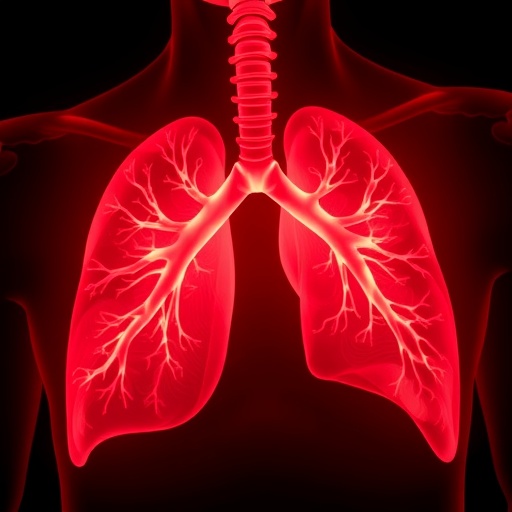In a groundbreaking study published in 2025 in the International Journal of Mental Health and Addiction, researchers have explored the patterns of cannabis use in adults diagnosed with Fetal Alcohol Spectrum Disorder (FASD). This investigation sheds significant light on the intersection of substance use and neurodevelopmental disorders, an area largely underexplored despite its critical public health implications. The study authored by Reboe-Benjamin, DesRoches, Reid, and colleagues provides novel insights that could potentially shape future therapeutic approaches and policy frameworks addressing substance use in vulnerable populations.
Fetal Alcohol Spectrum Disorder is a complex condition resulting from prenatal alcohol exposure, characterized by cognitive, behavioral, and physical impairments. Among the myriad challenges individuals with FASD face, managing substance use disorders poses a particularly formidable hurdle. While many studies have documented increased rates of general substance use in this population, the specific patterns and nuances of cannabis consumption have remained obscure, warranting the detailed investigation presented in this study.
Utilizing a robust cohort of adult subjects diagnosed with FASD, the researchers implemented comprehensive assessments to gauge cannabis usage frequency, dosage, and context of use. The methodology involved structured interviews combined with validated psychometric tools, enabling a nuanced exploration of both the qualitative and quantitative dimensions of cannabis consumption. Their approach allowed the unraveling of complex behavioral patterns associated with cannabis use in this unique population, highlighting both protective and risk factors.
The findings reveal an intriguing dimension of cannabis consumption behavior among adults with FASD. Contrary to prevailing assumptions that cannabis use is primarily recreational or solely for self-medication, the data indicates a heterogeneous spectrum of use motives. Some individuals reported using cannabis to alleviate anxiety, manage sensory overload, and cope with mood dysregulation—symptoms commonly associated with FASD neuropathology. This therapeutic facet of cannabis use underscores the potential for novel intervention strategies tailored to this population’s specific neuropsychological needs.
Notably, the research delineates differential patterns in frequency and quantity of cannabis use compared to non-FASD populations. Adults with FASD tend to consume cannabis in more irregular and episodic bouts, sometimes coinciding with heightened stress periods or social isolation. These episodic patterns contrast with more habitual or daily use frequently observed in the general populace. Understanding these consumption rhythms is imperative for clinicians, as it impacts screening accuracy, risk stratification, and the development of targeted harm reduction frameworks.
The neurocognitive implications of cannabis use in FASD adults were a focal point of the investigation. Cannabis, with its complex interaction with the endocannabinoid system, may exert both attenuating and exacerbating effects on the cognitive deficits inherent in FASD. The study discusses how cannabis cannabinoids influence synaptic plasticity, neurotransmitter regulation, and neural connectivity, all of which are already compromised in FASD. This biochemical interplay renders cannabis a double-edged sword—offering symptomatic relief while potentially deepening neurocognitive impairments or psychiatric comorbidities.
Furthermore, the researchers emphasize the significance of comorbid mental health disorders in shaping cannabis use trajectories. Anxiety disorders, depression, and ADHD, frequently comorbid with FASD, appear to modulate the motivation for cannabis consumption. This complex interplay suggests that therapeutic cannabis use should be carefully calibrated within a comprehensive mental health treatment plan, aligning psychopharmacological interventions with psychosocial support tailored to this at-risk group.
A fascinating dimension explored in the paper involves the social determinants influencing cannabis use in FASD adults. Socioeconomic status, access to healthcare, peer influences, and stigma were analyzed as critical external variables that mediate substance use behaviors. The study finds that social isolation and limited access to adequate support services heighten vulnerability, creating environments conducive to maladaptive coping mechanisms including cannabis use. This underscores the necessity for integrative social policies and community health programs aimed at mitigating these determinants.
Importantly, the investigation also touches upon the legal landscape surrounding cannabis. Given the evolving status of cannabis legalization globally, adults with FASD inhabit a unique intersection where increased availability collides with neurodevelopmental vulnerabilities. The study posits that policymakers must weigh these factors carefully, integrating safeguards and educational efforts that specifically target at-risk groups to prevent unintended exacerbation of health disparities.
Clinical implications derived from these findings are multifold. Healthcare providers are urged to incorporate detailed substance use histories into routine FASD care protocols, emphasizing cannabis use given its prevalence and neurobehavioral significance. Tailored therapeutic interventions combining behavioral therapies, psychoeducation, and possibly cannabinoid-mediated treatments might emerge as promising avenues, subject to rigorous clinical trials. The potential for cannabinoid-based therapeutics to alleviate refractory symptoms in FASD opens an innovative frontier for translational research.
The study’s multidisciplinary approach, drawing from neuropsychology, addiction medicine, and social epidemiology, exemplifies the type of integrative research necessary to unravel the complexities of cannabis use in neurodevelopmental disorders. This integrative framework bolsters the external validity of the findings, empowering stakeholders across clinical, social, and policy domains to implement evidence-based strategies that are both clinically effective and socially responsible.
While pioneering, the study also acknowledges its limitations, including reliance on self-reported data prone to bias and a cross-sectional design limiting causality inferences. The authors advocate for longitudinal research employing biomarkers and neuroimaging to delineate trajectories of cannabis use and their neurophysiological correlates in FASD populations. Such advancements would deepen understanding and refine interventions aimed at optimizing mental health outcomes.
The potential for integrating artificial intelligence and machine learning in future research is also briefly considered. These technologies could enable sophisticated pattern recognition and predictive modeling, tailoring individualized treatment plans for adults with FASD and cannabis use. Leveraging big data analytics could harness vast and varied datasets, generating hypotheses and translational pathways previously unattainable.
From a societal perspective, the study calls attention to the urgent need for public education campaigns addressing the unique risks and benefits of cannabis use in neurodevelopmental disability contexts. Sensitizing caregivers, healthcare workers, and community leaders about these nuances promotes informed decision-making and destigmatization, fostering supportive environments conducive to health and well-being.
In sum, the research spearheaded by Reboe-Benjamin and colleagues paves the way for a refined understanding of cannabis use in adults with FASD. By elucidating behavioral patterns, neurocognitive implications, and broader psychosocial determinants, the study charts a roadmap for clinical innovation and policy evolution. As the landscape of cannabis legalization and therapeutic application continues to shift, such targeted investigations remain critical to safeguarding vulnerable populations and harnessing the full spectrum of cannabis’s potential benefits responsibly and effectively.
Subject of Research: Patterns of cannabis use in adults diagnosed with Fetal Alcohol Spectrum Disorder (FASD) and its neurobehavioral, clinical, and social implications.
Article Title: Patterns of Cannabis Use in Adults with Fetal Alcohol Spectrum Disorder (FASD)
Article References:
Reboe-Benjamin, M., DesRoches, A., Reid, D. et al. Patterns of Cannabis Use in Adults with Fetal Alcohol Spectrum Disorder (FASD). Int J Ment Health Addiction (2025). https://doi.org/10.1007/s11469-025-01546-7
Image Credits: AI Generated




